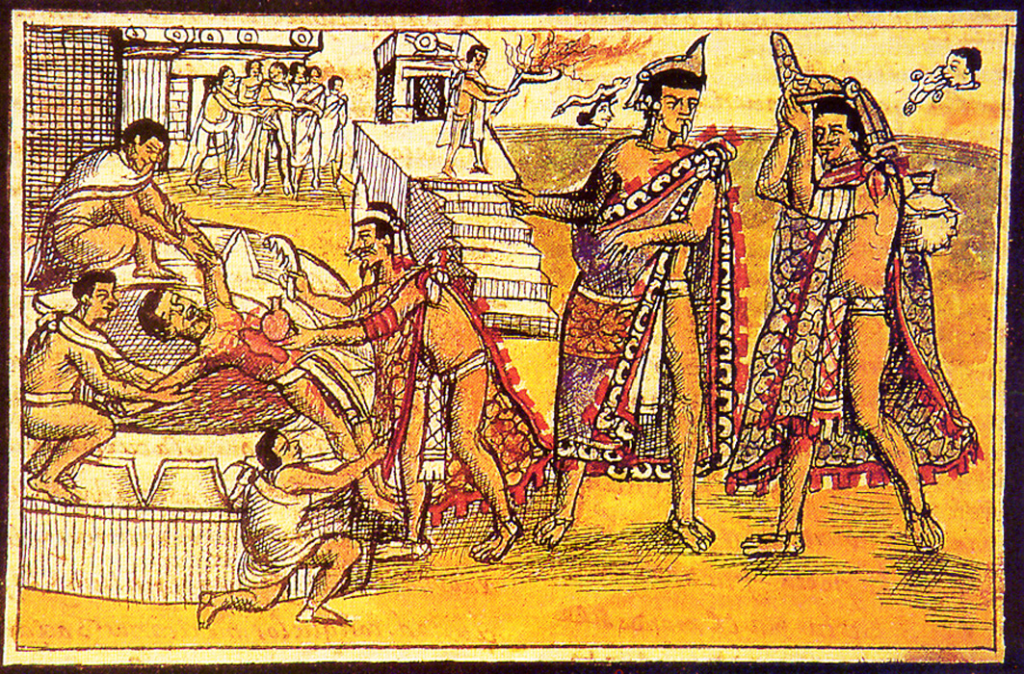The first contact between the Aztecs of Mesoamerica and Spanish Conquistadors is well documented as bloody and disastrous for the Aztecs. However, it was the period of time just after first contact that was much deadlier for the native people, as diseases tore through these communities. These diseases were strong enough to wipe out up to 80% of the population and create a new term in the Aztec language – cocoliztli. One such epidemic, a disease that burned through the town of Teposcolula-Yucundaa between 1545 and 1550, has remained a mystery until recently when a group of researchers found evidence of the disease’s cause.
Five-hundred year old diseases are difficult to identify, but do leave behind small traces of DNA in the remains of those that were infected. In the case of Teposcolula-Yucundaa, teeth from 28 bodies found within the mass graves were tested for bacterial DNA. Of those 28 bodies, 10 had DNA linked with Salmonella enterica, also known as enteric disease. The fragments of DNA were found using MALT, a new method for identifying bacteria. MALT was a faster improvement over the old method (BLAST) because it allows scientists to examine biological samples at the genome level for DNA that can be associated with certain species or subspecies of bacteria when compared to a database of previously identified DNA sequences.
If you are not familiar with DNA technology like MALT and BLAST, it may help to think of genomes as a set of books where the individual books in the set are DNA strands. Once scientists find a few books (DNA strands) they can identify in the set, they know what the name of the book set is. In this case, the genomic “book set” was traced to a subspecies of Salmonella enterica that was highly contagious and extremely lethal to the native population. MALT allows scientists to quickly match up the DNA of suspected diseases against a wide range of known diseases instead of relying on the symptoms or potentially biased opinions about what the disease was in the historical record.
It might be easy to think that the new methods developed were overkill and we could use historical records to help us identify the disease based on what was recorded by the Spaniards or survivors of the epidemic. Unfortunately, this is not the case because bacterial diseases can evolve over time. They can develop new symptoms in humans, change existing symptoms, or become completely extinct over generations. Additionally, the records we still have may be exaggerated, incomplete, mistranslated, or they might not have recorded enough information for a diagnosis to be made years later.
However, now that an identity has been found based on actual genomic evidence, historians can revisit the written records of Teposcolula-Yucundaa between 1545 and 1550 to see how well the symptoms match with those of Salmonella enterica. A Spanish physician from this time period, Francisco Hernandez, recorded the symptoms as dark tongue, profuse bleeding from the nose, mouth, and eyes, severe fever, headache, and vertigo (among others). His writings match well with the symptoms of enteric fever. Today, typhoid fever is the most common form of enteric fever observed, which is caused by another Salmonella strain, Salmonella typhi. Even today, typhoid fever is a threat to many populations and infects up to 27 million people each year. Aztecs, who would have had no time to develop resistance to the disease at the time, were recorded as dying within three to four days of exhibiting symptoms.
One big question remains now that the the bacteria have been identified – where did it come from? It is entirely possible that this disease came from the Spanish through direct contact when they arrived in Mexico, but the exact source of S. enterica remains a mystery. It will take future work to pinpoint the bacteria’s origin, but it is clear that the disease had devastating effects on the native population.


